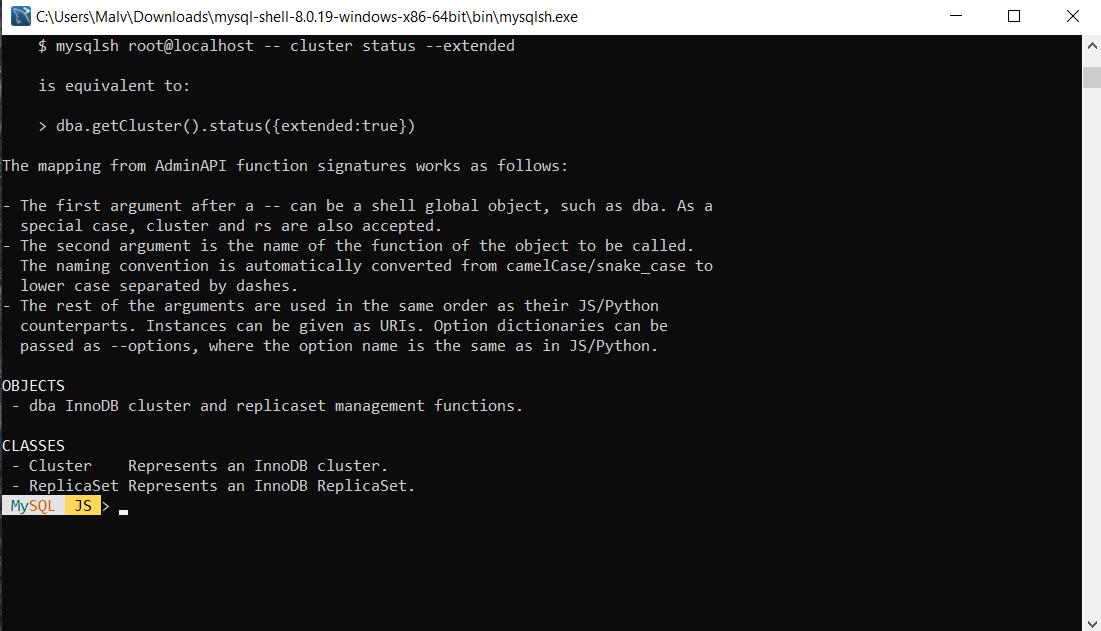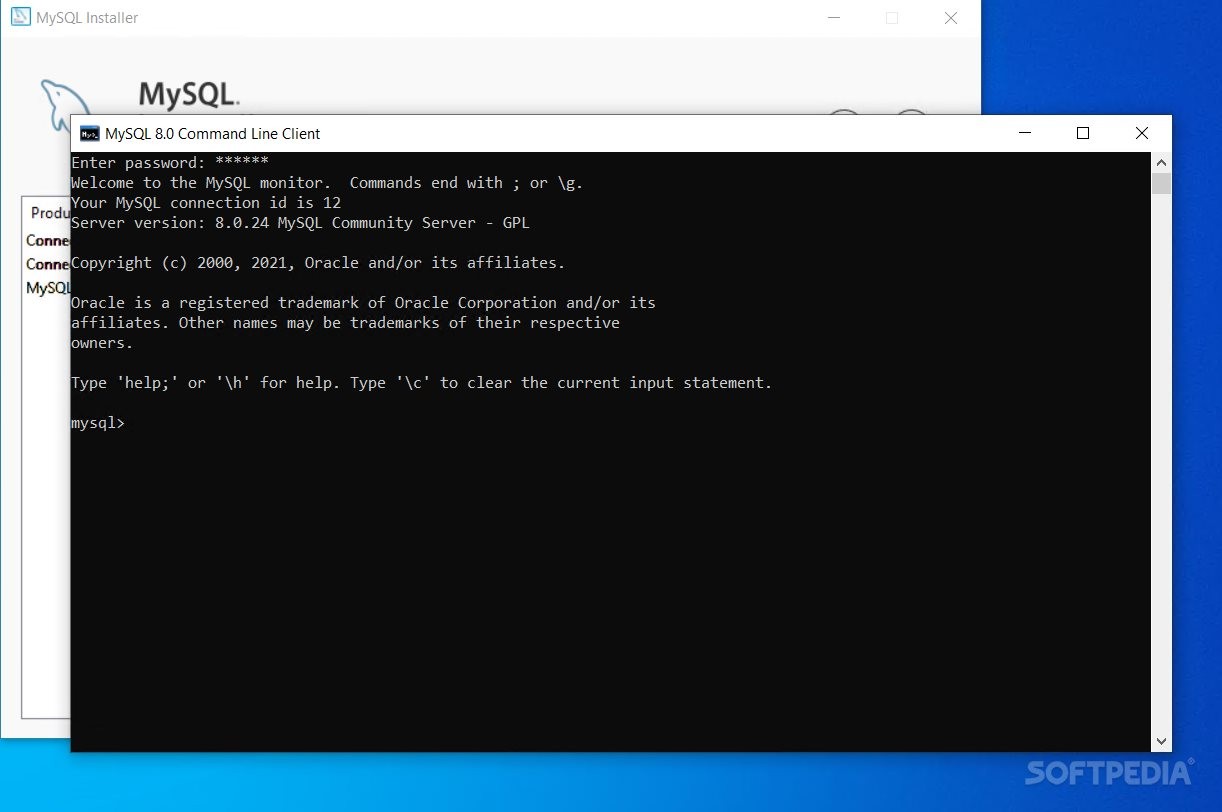


#MYSQL SHELL SOFTWARE#
MySQL Shell 4.2.3 Scripting Sessions in JavaScript and Python Mode 4.3 MySQL Shell Connections 4.3.1 Connecting using Individual Parameters 4.3.2 Connecting using login-path and Options Files 4.3.3 Connecting using Unix Sockets and Windows Named Pipes 4.3.4 Using Encrypted Connections 4.3.5 Using LDAP and Kerberos Authentication 4.3.6 Using an SSH Tunnel 4.3.7 Using Compressed Connections 4.4 Pluggable Password Store 4.4.1 Pluggable Password Configuration Options 4.4.2 Working with Credentials 4.5 MySQL Shell Global Objects 4.6 Using a Pager 4.7 Cloud Service Configuration 4.7.1 Oracle Cloud Infrastructure Object Storage 4.7.2 S3-compatible Storage 4.7.3 Azure Blob Storage 5 MySQL Shell Code Execution 5.1 Active Language 5.2 Interactive Code Execution 5.3 Code Autocompletion 5.4 Editing Code 5.5 Code History 5.6 Batch Code Execution 5.7 Output Formats 5.7.1 Table Format 5.7.2 Tab Separated Format 5.7.3 Vertical Format 5.7.4 JSON Format Output 5.7.5 JSON Wrapping 5.7.6 Result Metadata 5.8 API Command Line Integration 5.8.1 Command Line Integration Overview 5.8.2 Command Line Integration Details 5.9 JSON Integration 6 MySQL AdminAPI 6.1 Using MySQL AdminAPI 6.2 Installing AdminAPI Software Components 6.2.1 Using Instances Running MySQL 5.7 6.2.2 Configuring the Host Name 6.2.3 Connecting to Server Instances 6.2.4 Persisting Settings 6.3 Retrieving a Handler Object 6.4 Creating User Accounts for AdminAPI 6.5 Verbose Logging 6.6 Finding the Primary 6.7 Scripting AdminAPI 6.8 AdminAPI MySQL Sandboxes 6.8.1 Deploying Sandbox Instances 6.8.2 Managing Sandbox Instances 6.8.3 Setting up InnoDB Cluster and MySQL Router 6.9 Tagging Metadata 6.10 Using MySQL Router with AdminAPI, InnoDB Cluster, and MySQL Shell 4.2.2 Creating the Session Global Object After Starting Table of Contents 1 MySQL Shell Features 2 Installing MySQL Shell 2.1 Installing MySQL Shell on Microsoft Windows 2.2 Installing MySQL Shell on Linux 2.3 Installing MySQL Shell on macOS 3 Using MySQL Shell Commands 3.1 MySQL Shell Commands 4 Getting Started with MySQL Shell 4.1 Starting MySQL Shell 4.2 MySQL Shell Sessions 4.2.1 Creating the Session Global Object While Starting Software that may be included in this Community release.
#MYSQL SHELL MANUAL#
IfĬommunity License Information User Manual for licensing information, Software that may be included in this Commercial release. Including licensing information relating to third-party This product may include third-party software, used underĬommercial License Information User Manual for licensing information,
#MYSQL SHELL DOWNLOAD#
Yet installed MySQL Shell, download it from theįor notes detailing the changes in each release, see theįor help with using MySQL, please visit theĬan discuss your issues with other MySQL users. MySQL Shell 8.0 is highly recommended for use with MySQL ServerĨ.0 and 5.7. With InnoDB Cluster, InnoDB ClusterSet, and InĪddition to the provided SQL functionality, similar toĬapabilities for JavaScript and Python and includes APIs for This document describes the core features of MySQL Shell. MySQL Shell is an advanced client and code editor for MySQL.


 0 kommentar(er)
0 kommentar(er)
